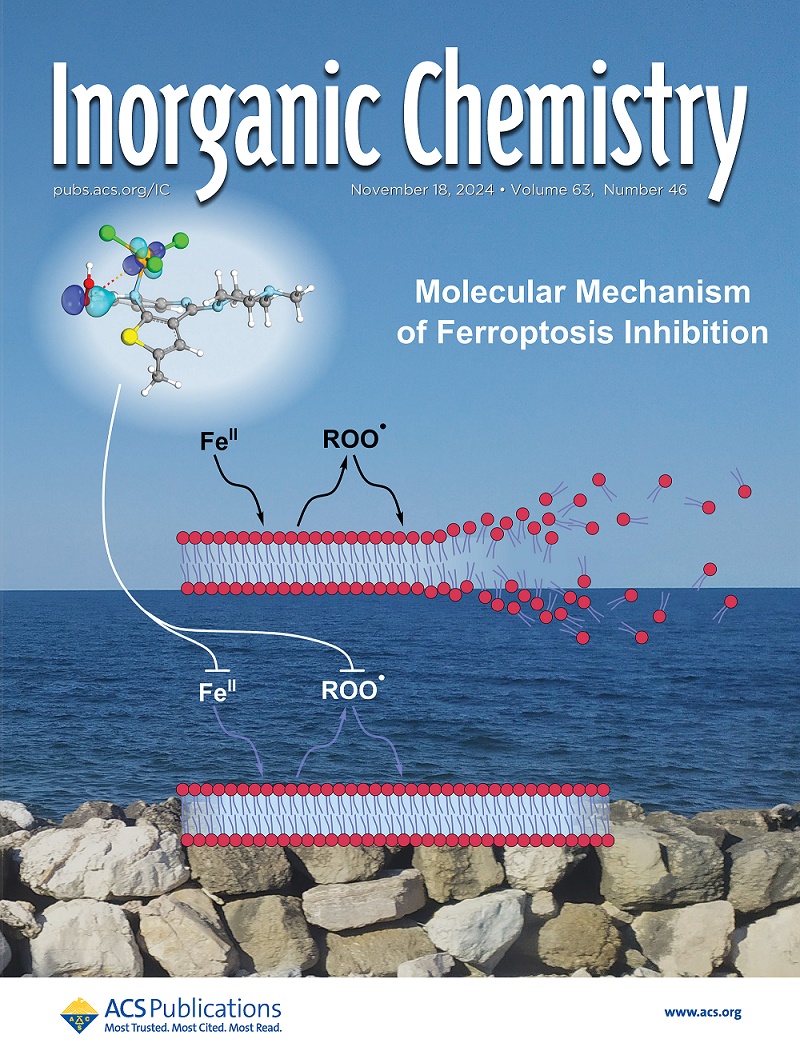取代钴联吡啶配合物的光化学和电化学性质的理论分析:染料敏化太阳能电池氧化还原介质的案例研究。
IF 4.7
2区 化学
Q1 CHEMISTRY, INORGANIC & NUCLEAR
引用次数: 0
摘要
本研究对取代的联吡啶钴配合物的光物理和电化学性能进行了全面的理论研究,并评估了其作为染料敏化太阳能电池中潜在的氧化还原介质的性能。利用多种计算方法,包括密度泛函理论和多参考电子相关技术,我们研究了不同取代基对钴配合物的电子结构和稳定性的影响。我们的研究结果表明,强吸电子基团提高了形式氧化还原电位,而给电子基团降低了形式氧化还原电位,说明了电子效应对络合物稳定性的微妙平衡。将模拟的性能与现有的实验测量结果进行了比较,证明了良好的相关性,并验证了所采用的计算方法。自旋态分析表明,钴(II)配合物主要以高自旋态存在,而钴(III)更倾向于低自旋构型。计算了这些配合物的重组能,突出了内壳层和外壳层在决定电子转移动力学中的作用。本文章由计算机程序翻译,如有差异,请以英文原文为准。
Theoretical Analysis of Photochemical and Electrochemical Properties of Substituted Cobalt Bipyridine Complexes: Redox Mediators in Dye-Sensitized Solar Cells as a Case Study.
This study presents a comprehensive theoretical investigation into the photophysical and electrochemical properties of substituted cobalt bipyridine complexes, evaluated as potential redox mediators in dye-sensitized solar cells. Utilizing a variety of computational methods, including density functional theory and multireference electron correlation techniques, we examine the influence of various substituents on the electronic structure and stability of cobalt complexes. Our findings reveal that strong electron-withdrawing groups enhance the formal redox potential, while electron-donating groups decrease it, illustrating the delicate balance between electronic effects on the complex stability. The simulated properties were compared with the available experimental measurements, demonstrating good correlation and validating the computational approaches used. Analysis of the spin states indicates that cobalt(II) complexes predominantly exist in a high-spin state with low-spin configurations favored in cobalt(III). The reorganization energy for these complexes was calculated, highlighting the role of the inner and outer-shell contributions in determining electron transfer kinetics.
求助全文
通过发布文献求助,成功后即可免费获取论文全文。
去求助
来源期刊

Inorganic Chemistry
化学-无机化学与核化学
CiteScore
7.60
自引率
13.00%
发文量
1960
审稿时长
1.9 months
期刊介绍:
Inorganic Chemistry publishes fundamental studies in all phases of inorganic chemistry. Coverage includes experimental and theoretical reports on quantitative studies of structure and thermodynamics, kinetics, mechanisms of inorganic reactions, bioinorganic chemistry, and relevant aspects of organometallic chemistry, solid-state phenomena, and chemical bonding theory. Emphasis is placed on the synthesis, structure, thermodynamics, reactivity, spectroscopy, and bonding properties of significant new and known compounds.
 求助内容:
求助内容: 应助结果提醒方式:
应助结果提醒方式:


